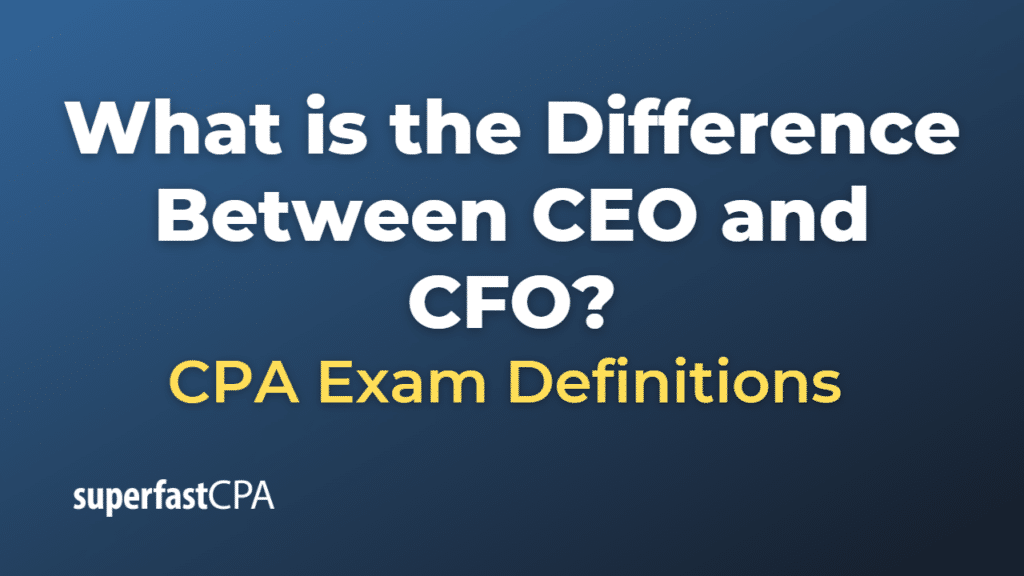Difference Between a CEO and a CFO
The CEO (Chief Executive Officer) and CFO (Chief Financial Officer) are both high-ranking executive positions within a company, but they have different areas of focus and responsibility:
- CEO (Chief Executive Officer): The CEO is typically the highest-ranking executive in the company. They are primarily responsible for making major corporate decisions, managing the overall operations and resources of a company, and acting as the main point of communication between the board of directors and the corporate operations. The CEO usually sets the company’s strategy and future direction and is responsible for creating a vision, mission, and overall culture for the company. Essentially, the CEO is responsible for the success or failure of the company.
- CFO (Chief Financial Officer): The CFO is responsible for managing the company’s finances, including financial planning, risk management, financial analysis, record-keeping, financial reporting, and so on. The CFO’s duties include assessing financial risks and opportunities, ensuring cash flow is adequate to meet operational requirements, and creating financial reports. The CFO typically reports to the CEO and the board of directors and may make strategic recommendations based on financial analysis.
In essence, while the CEO oversees the overall management of the company, the CFO specifically handles financial management. Both roles are critical for the success of the company. The CEO provides strategic leadership and the ‘big picture’ direction, while the CFO provides a financial perspective, ensuring that the company’s financial practices are in line with its strategic goals.
Example of the Difference Between a CEO and a CFO
Let’s consider a hypothetical tech startup, “TechNovation Inc.”
CEO Role:
The CEO of TechNovation, Jane, is responsible for the overall strategic direction of the company. She works closely with the board of directors and other executives to set company goals, make major corporate decisions, and develop the company’s mission and vision. Jane represents the company in all official capacities, including media interactions and investor relations.
For instance, Jane decided to diversify TechNovation’s product portfolio and enter into a new market segment – home automation. This strategic decision involved coordinating with different departments, presenting plans to the board, and announcing this new direction to stakeholders and the media.
CFO Role:
On the other hand, the CFO of TechNovation, John, is tasked with managing the company’s financial situation. This includes financial planning, tracking cash flow, analyzing the company’s financial strengths and weaknesses, and proposing corrective actions.
In line with Jane’s decision to venture into home automation, John was responsible for providing a detailed financial projection of the new venture, including potential revenues, costs, and risks involved. He needed to ensure that the financial aspects of this decision were viable and in the best interest of the company.
In this example, Jane as the CEO set the strategic direction of the company, while John as the CFO evaluated and managed the financial implications of this strategy. Both roles, while distinct, are essential for the successful operation of TechNovation.













